“I don’t think she could even sit up yet, but I remember noticing that my daughter would watch another baby’s reaction after she snatched a toy from him.
I know she didn’t do it to make the other child unhappy…
But I felt like maybe I could help her understand that her actions had an affect on other people by talking about how the other baby felt sad, and offering a solution.”
Using language to label emotions can be helpful not only to learn about emotional vocabulary, but also to respect and validate that it’s ok to feel lots of different things.
This, in turn, supports her social-emotional development as well as her development of social cognition.
In our corresponding podcast episode, “Labelling Emotions,” we discussed the power of labelling emotions.
When you label emotions of people in your environment (especially when strong emotions are witnessed), or those your baby expresses, you give words to feelings and reassure her that feelings of all kinds are valued.
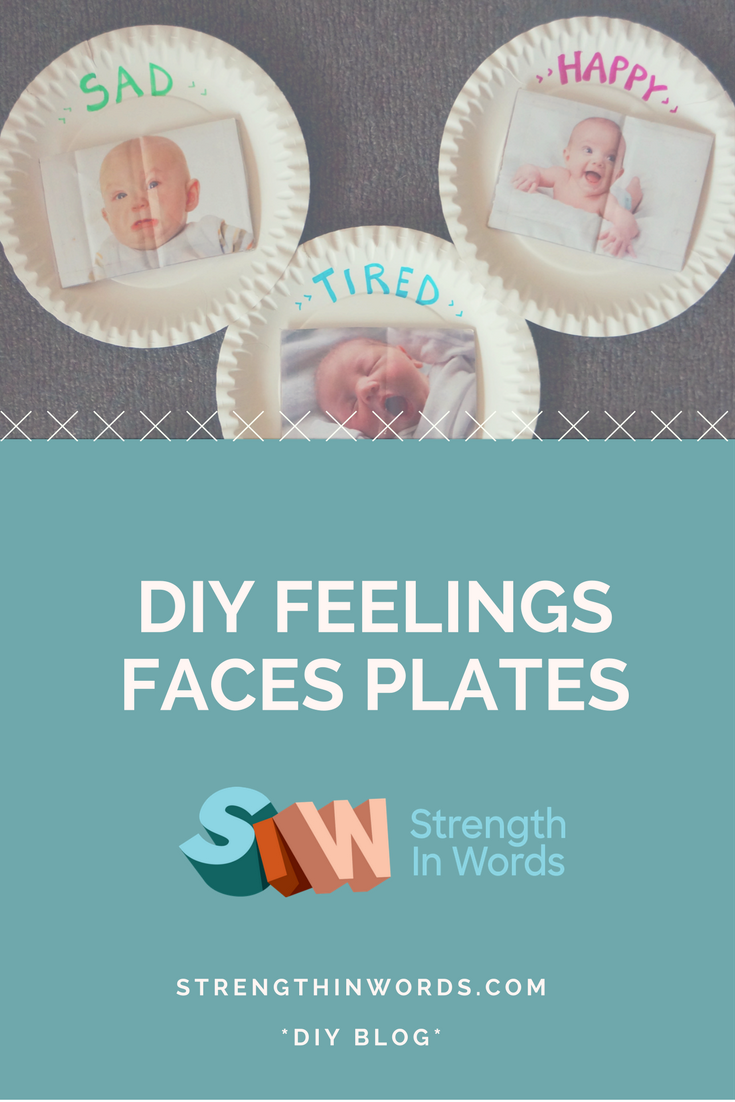
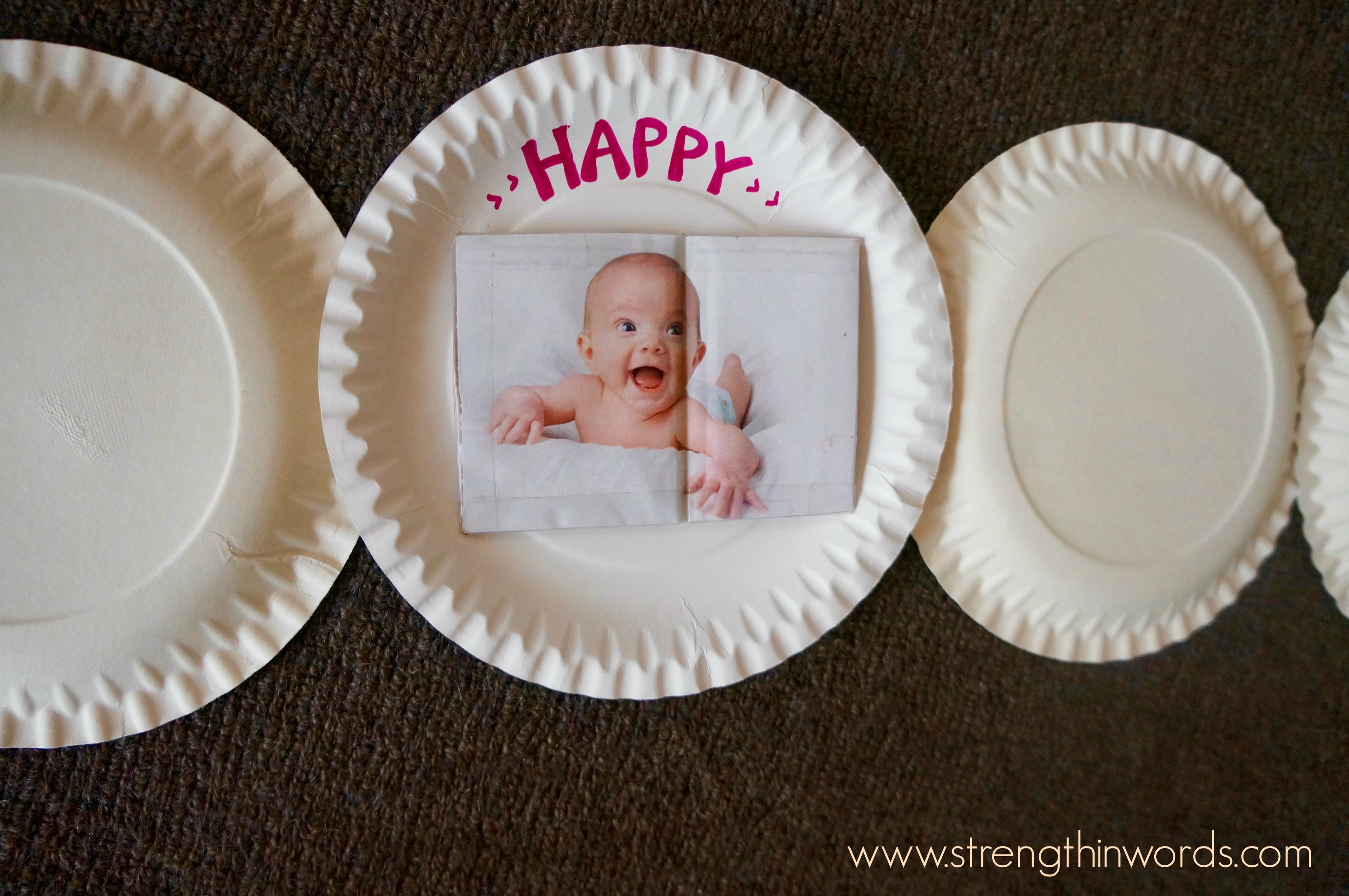
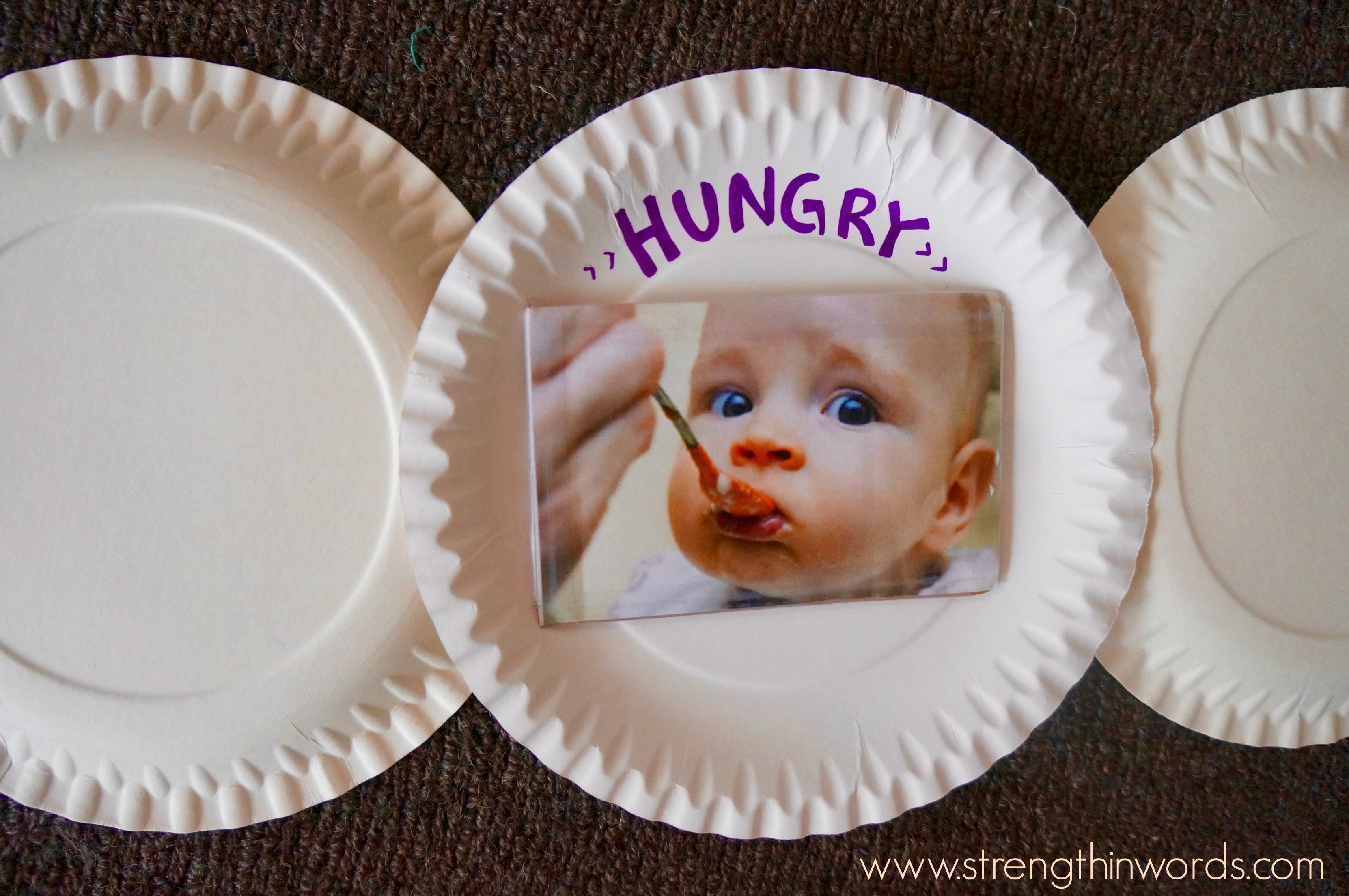
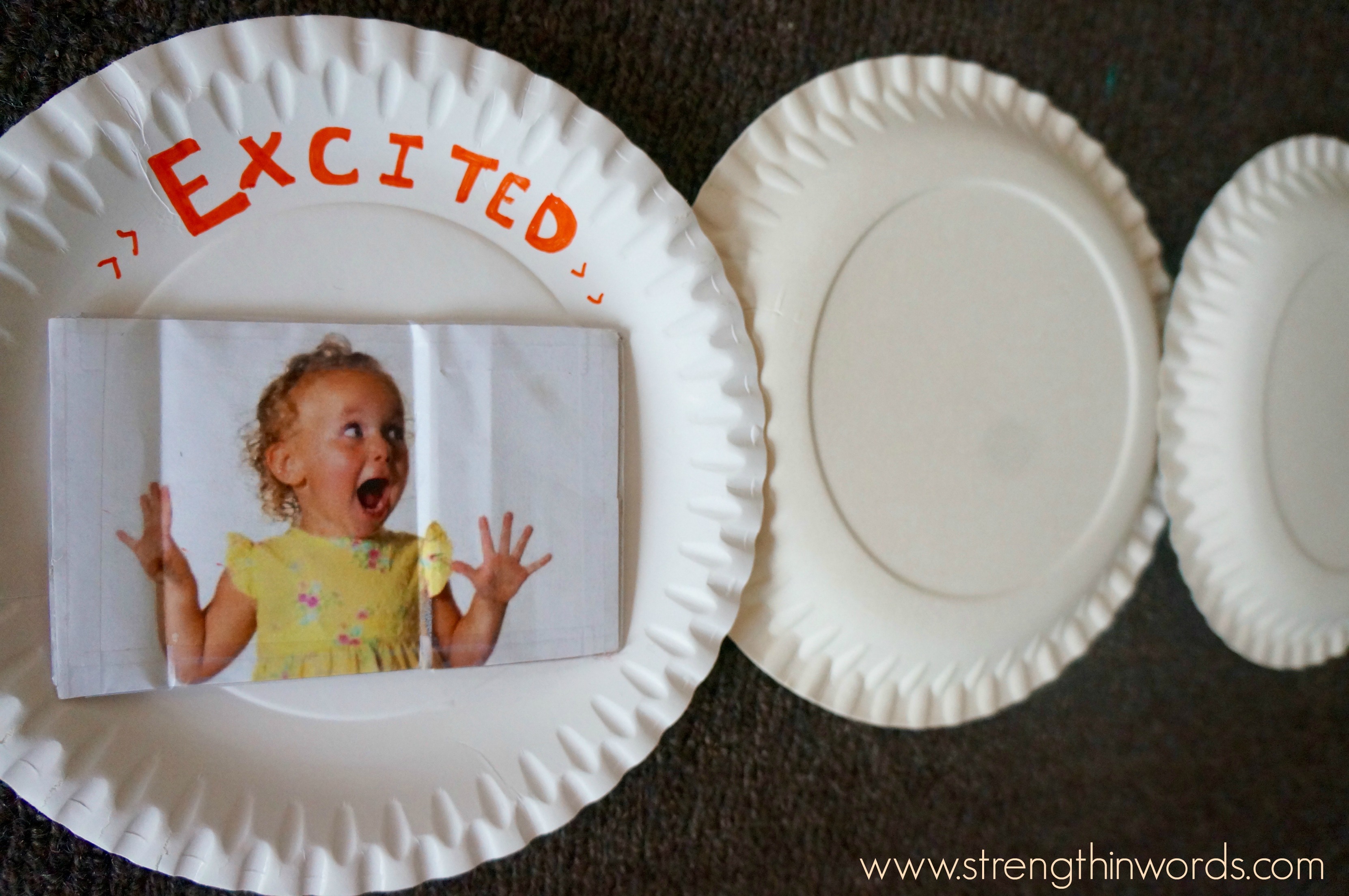
Don't Miss our Corresponding Podcast Episode!
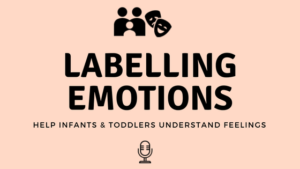
Materials to create your DIY feelings faces plates:
- 5-6 paper plates
- A search engine (to locate 5-6 images of various emotions such as happy/sad/excited/mad/tired/hungry) and printer, OR a nice marker and some artistic talent!
- Brightly colored markers to write the name of the emotion (why not highlight print while you’re at it!)
- Tape
Instructions to create your DIY feelings faces plates:
- Affix each picture to a separate plate with the tape (or draw the various pictures directly on the plates)
- Place them all face down, and either turn one over yourself, or allow your baby to choose which plate she wants / wants you to flip over (either by simply doing it herself, or by pointing to, gazing at, or moving her body toward the desired plate).
- Talk about what you see in the picture, and how that baby/child feels. Tell a story about why that baby feels that way (each time you do this, you might tell a different story, to keep it interesting). Let the emotion shown on the plate dictate the verse of the song you sing.
- Use gestures like the ones in my video below to create a truly multi-sensory experience for your little one!
This post contains affiliate links. All activities described by Learn With Less assume close and continuous supervision of the child by an adult.
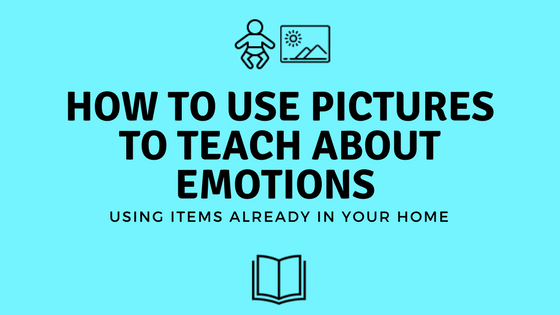
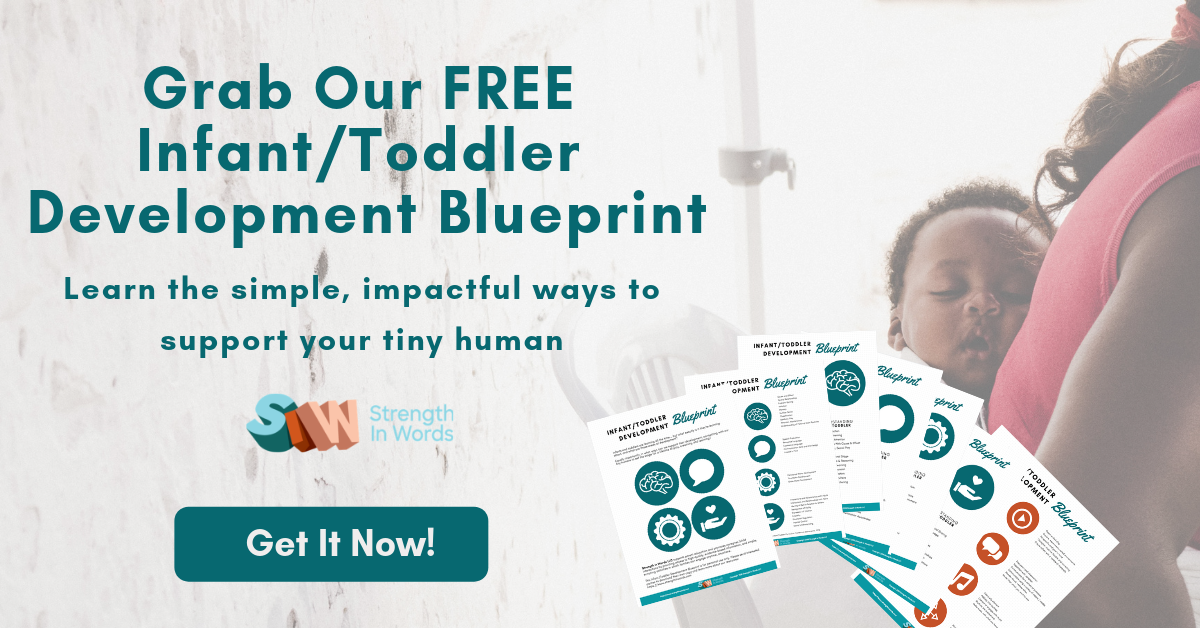
What a lovely way to explore emotions with a little one #Letkidsbekids
Great idea to use baby photos. Emotions are so important to teach.
Thanks for sharing with #LetKidsbeKids
A nice idea to visually represent emotions #LetKidsBeKids
Thanks so much!
A great idea for developing emotional intelligence X #toddlerapprovedtuesday
Thanks, Laura!
I need to make these! We’ve been working on all sorts of vocabulary activities. I should include something like these for my youngest! Thanks!
Yay! Enjoy – let me know how it goes!
These have turned out fab. I made some but drew a simple face on but other than happy and sad I don’t think anyone could tell what the rest were. The photos look much better. Thank for sharing on #ToddlerApprovedTuesday
That’s great news!!! I love that you attempted to draw them! What fun.